Nicaragua: Life After the La Chureca Garbage Dump
Investment from the Spanish Agency for International Development Cooperation was 41.2 million euros.
Sealing the dump and providing a recycling plant, housing and social services have buried a symbol of poverty and poor sanitary conditions in the Managua neighborhood of Acahualinca
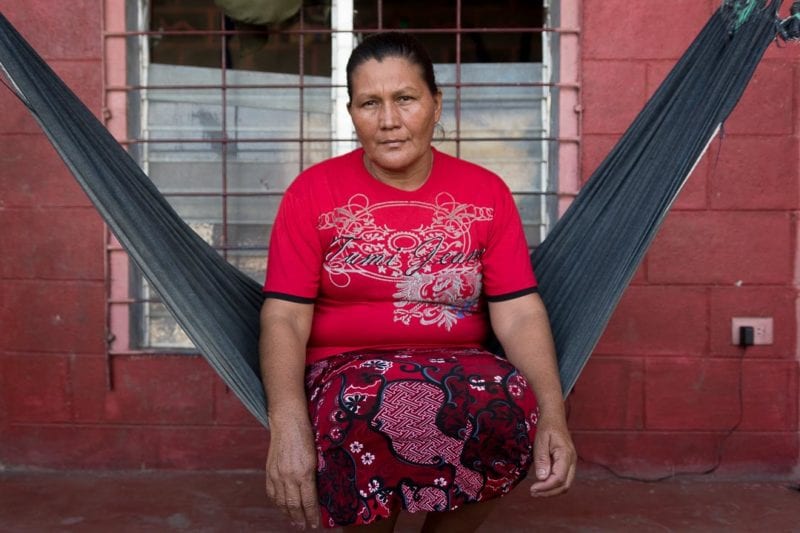
By Maynor Salazar (Confidencial)
HAVANA TIMES — Twenty-seven frames decorate the walls of the room. Every one of them depicts a different story: his daughter’s birthday, the promenade to Managua’s old pier, the photo of his daughter when she was in 3rd grade, all symbols of joy. Freddy Mercado doesn’t want to bring his past to the present. “There’s no need, I’m going to remember it, but I don’t want photos of it,” he says bluntly.
Freddy Mercado’s past is tied to the largest city dump that ever existed in Nicaragua: La Chureca. A filthy dump that took up 40 hectares in the north-west outskirts of Managua and that accumulated approximately four million square meters of waste over 40 years.
Freddy arrived at the dump when he was 23 years old. He was told that he could earn good money there if he wanted to. Overwhelmed because he had no other job, he embarked on this adventure of collecting solid waste that he used to find in the heaps of garbage that collection trucks would leave every time they entered the dump.
“I’m not embarrassed to say it. When we were hungry, we used to wait for the trucks that we knew were coming from restaurants, from hotels. When they arrived, we would throw ourselves on top of them to grab the best spoils for ourselves,” Mercado tells me.
In order to eat something “tasty”, some people used to talk to the truck drivers asking them to put aside food scraps in plastic bags, before entering the dump. In return for a few cordobas, the driver would hand over the order and the dumper used to eat a “finer” meal.
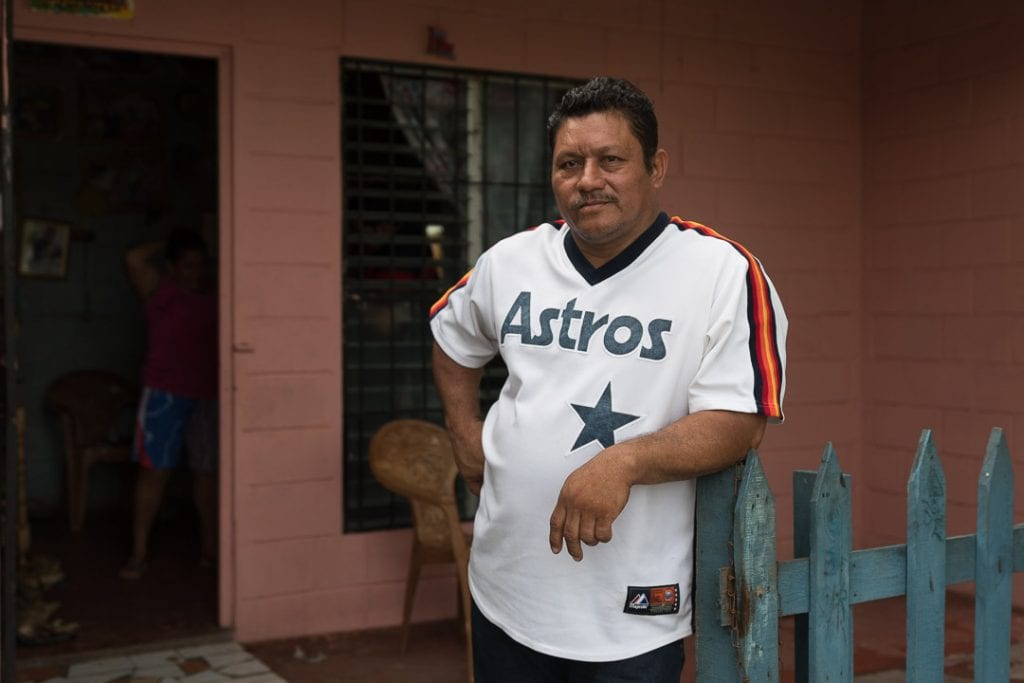
“Once, I was so hungry that I became delirious and I ate a sanitary towel thinking it was a hot dog and I’m not sorry to say it. Luckily, I never ate anything poisonous,” he says bursting out in laughter.
Freddy put up with vultures pecking at his head when he pulled at bags full of hotel waste. Sometimes, he was lucky and he would find a piece of chicken. When he wasn’t so lucky, he would get along with a soda that he used to buy and a piece of bread. He could easily make at least 1,200 Cordoba’s (US $40) in a day’s worth of work.
La Chureca was a workplace and a home. Some people used to live in shacks near the garbage and others used to live outside the dump. Their noses got used to the dump’s permanent stench. During the winter, they emulated spiders, building and rebuilding their homes every time that the rains swept them away. There were over 1500 people living there, children, teenagers, young people and adults, condemned to the same lifestyle.
The only promise met
Sandra Mendez washes a sheet of plastic; she dries it and then hands it to her husband so that he can put it in the wooden cart. She also worked in La Chureca, along with her husband and their five children. She used to wake up in the early morning to make tortillas which she would then sell at the dump. When she finished selling them, she used to get out a sack and start collecting glass.
Working in the dump was never a life choice for Sandra. However, she did it so that she could feed her children properly who used to help her collect all of the glass they would find across the entire dump.

“It [working on the dump] was very dangerous work and I was worried that my children would come out cut up. I always used to follow them closely, making sure that they wouldn’t eat anything strange or cut themselves with a needle. Living in La Chureca was good and bad. Good because you could collect enough money, and bad because we were always exposed to pollution,” Sandra says.
Every year when December rolled around, Freddy, Sandra and thousands of dumpsters would receive a visit from singers, actors or legislators who would bring food and presents. “We received a lot of support. And I think that’s why we wouldn’t leave. People used to say, those poor garbage people, but we weren’t poor. We had money, but of course we have to spend hours under the sun to do this. Plus, it was the only thing we could do,” noted Freddy.
A visit of “cheles” (foreigners) along with Mayor Dionisio “Nicho” Marenco, gave signs of hope to the people living in the dump. In spite of them hearing other times that they were going to be taken out of poverty and that they would receive a home, there was “something” this time that made them believe that the promises might be met.
Change began under Marenco’s administration (2004-2008) when the Spanish Agency for International Development Cooperation (AECID) and Managua City Hall started implementing the Acahualinca Neighborhood Comprehensive Development Scheme.
The environmental aspect of the development included sealing the dump, which benefitted the sanitation of Lake Managua, as well as installing a waste classification plant and compost for organic fertilizer, and improving conditions in the neighborhood.

A total of 258 homes were built under the parameters of low-cost housing. Essential basic services can now be found in the complex, as well as a health center, a school, a day care center, green and play areas, a police station and a historic center. The total investment sum was 41.2 million euros.
“Spain’s First Lady (vice-president Maria Teresa Fernandez de la Vega), asked my son if he wanted a house and to get out of the dump, and my son said yes. I had my doubts in the beginning, because they were so much talk, and it was going to cost so many millions. However, they then told us that they already had the homes, that they had everything, it was a very happy moment,” mentioned Sandra.
“It’s just that sometimes they talk a lot. I was about 70% sure this time and I had faith that we would one day come out of poverty, leave this dump, someday. The Spanish made an agreement with our president and told us that we would be evicted but that we would receive a really nice house and a job and that’s what happened,” Freddy confirmed.
Each house has a living room, three bedrooms, a bathroom and a patio where two more rooms can be built. Freddy lives with his wife and his 10 year old daughter. Sandra shares her home with her husband and five children.
Managua City Hall didn’t contribute to the project with funds but with payment in kind. Subsidies made Aecid’s work easier when it came to launching the project, plus the community took it upon themselves to solve the problem relating to ownership of the land where the dump used to be.
Aecid delivers the project to Managua City Hall
In 2012, Aecid handed over the sealed dump and the Villa de Guadelupe horizontal urbanization project to Managua City Hall. The community also received social infrastructure (health centers, school) and a recycling plant.
The recycling plant was designed to classify solid urban waste and to recycle plastic, glass, paper, cardboard, metal and organic waste to produce organic fertilizer.
Confidencial asked Mauricio Diaz, the CEO of the company, for an interview so that he could show people how the recycling plant operates, however, neither the official, nor City Hall, responded to our request.
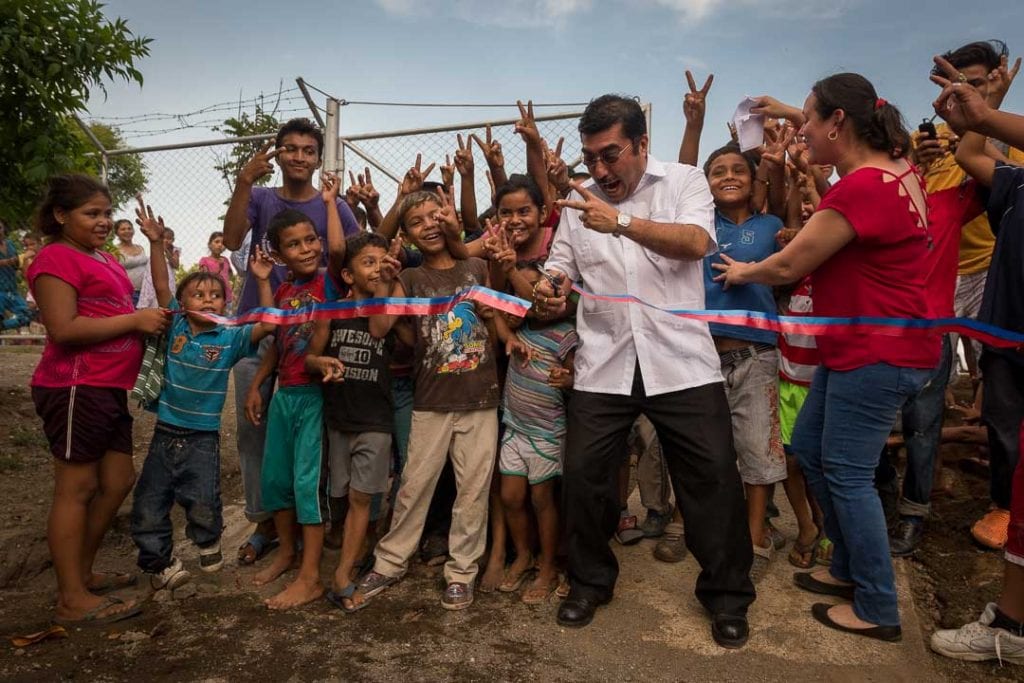
During the write-up of this article, Confidencial attended the inauguration that Managua Vice-Mayor Enrique Armas held for expanding the rainwater drainage project in Villa Guadalupe.
The vice-mayor refused to answer our questions about the project’s benefits on the community. “We’ll talk about it another day, not today,” was the only thing Armas said.
In Villa Guadalupe, community members talk proudly about their new lifestyle.
Marisol Martinez said that everyone’s situation has improved, not only because of the houses they were given, but because of the stable jobs they now have too.
“It’s another environment, it’s another infrastructure for our home, financially too, everything around these people changed,” claimed Silvia Guido, another resident.
Levi Sanchez, a resident in the neighborhood, claimed that they no longer have the problems they had for 31 years. “In the winter season, the flies were unbearable and the stench was awful, it’s not like that anymore, and that’s a good thing, we’ve all seen the positive changes,” he reflects.
According to Kamilo Lara, the director of the National Recycling Forum (Fonare), removing La Chureca helped to get rid of one of the worst displays of pollution in Managua city.
Methane emissions and the greenhouse effect these have on the environment, the large-scale fires that affected the west side of the city, were a part of the set of pollutants that the dump offered.
“There are important benefits here, we have taken the quality of life people had before when they were rummaging through food among the waste, fighting off vultures, the threat that this group of families presented to public health as a starting point,” explains Lara.
The project also had a positive impact on recovering Lake Managua, as waterproofing the complete surface of the ground has helped to prevent liquids, which used to contaminate the lake before, from filtering through the aquifer.
“Our landscape had been affected, the same happened with wind direction, those fires used to carry pollutants to the now developed area in Salvador Allende port and clearly this has all been cleaned and I believe that this is when we began to start sticking up for Lake Managua,” Lara continued.
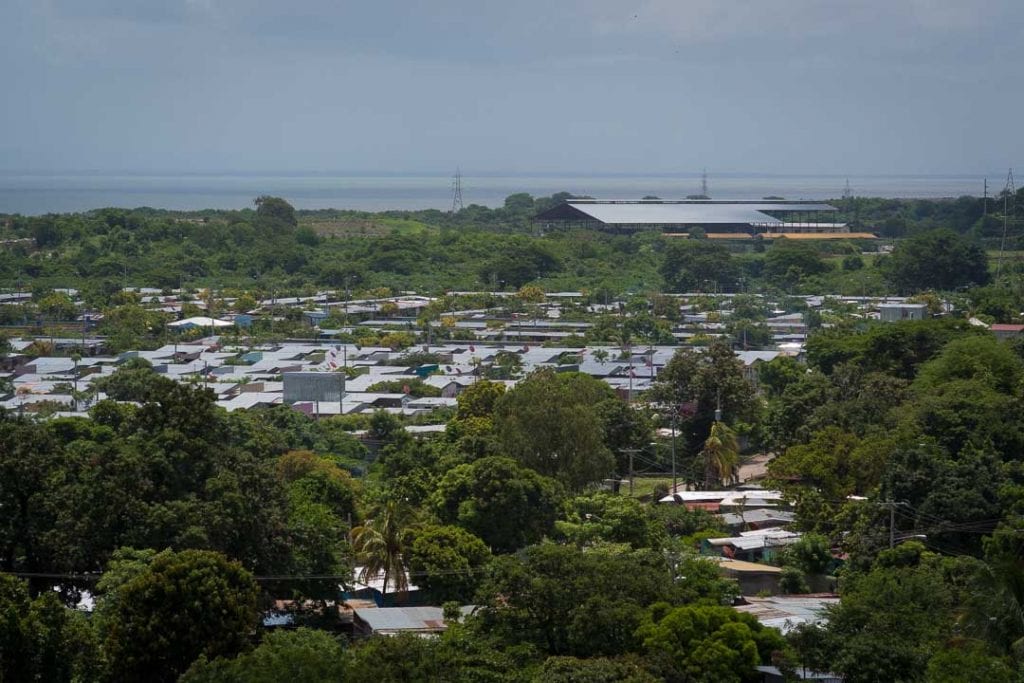
Post-Chureca problems
Ironically, in spite of eliminating a dangerous and uncertain job which allowed them to make a living, some families are now complaining about the lack of economic opportunities, or about the fact that they don’t have the skills they need to be able to take advantage of them.
Marisol Martinez, a Villa Guadalupe resident, says that people have been laid off at the recycling plant and nobody knows why. This just leads to people returning to the dump in the end and exposing themselves to the same dangers they have done for years.
Sandra Mendez, who works inside the plant, avoided the subject of people being laid off. However, she claims that what they earn at the recycling plant isn’t even enough to buy their need basic food products. She earns between 150 and 200 Cordoba’s (between 5 and 6.80 USD) per day.
Over the last few months, a group of former dumpsters demanded entry to the old dump. However, the director of the Recycling Plant denied them access.
The former dumpsters came together and demanded entry to the plant from Managua City Hall. They claim that they are people who were at the dump from the very beginning and that it’s their “right” to be able to enter the plant.
German Salgado is the leader of the former dumpsters. His wife received a house and his son was given the job, “They said that it would be better for my son to work, and many of us have been cast aside. They didn’t think about the fact that we all needed to work. In the beginning, they used to let us enter the plant but now they don’t, they get the Police to kick us out,” he complained.
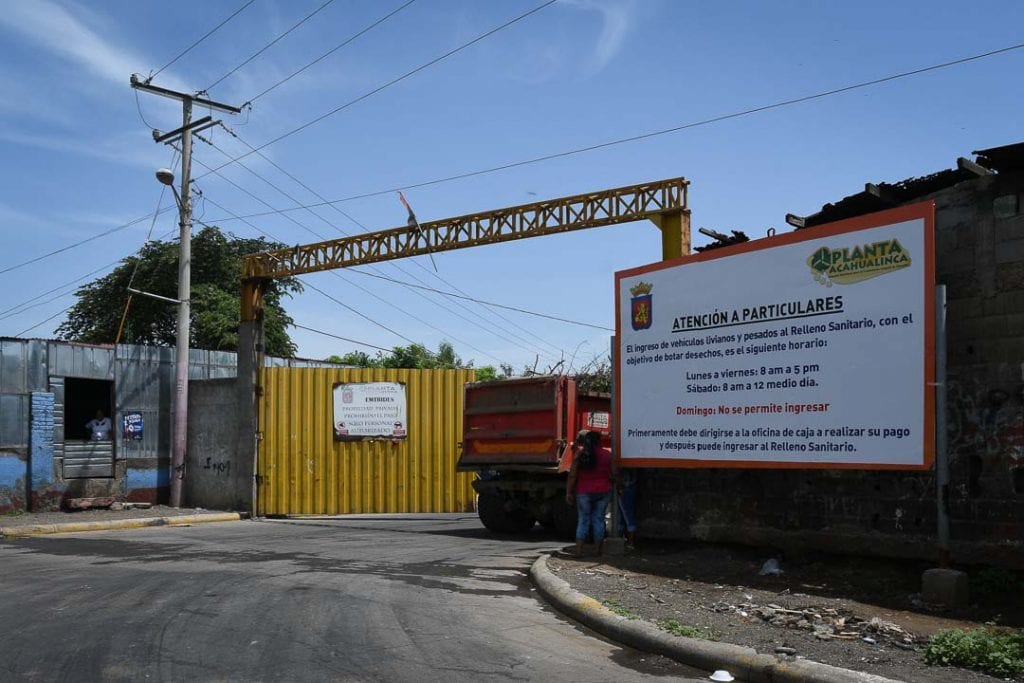
Managua City Hall authorities argue that they refuse them entry because of safety.
Environmentalist Kamilo Lara proposes an alternative solution to what those being affected are saying. “One of the options these people have is to form cooperatives that have municipal support, backed by Rednica. And they should be multi-service cooperatives. Who sort organic waste in communities and then sell it. Because if there’s one thing we aren’t running short of in this country, it’s garbage,” the environmentalist said.
Lara says that if these people are allowed to enter the recycling plant, the work that was done when La Chureca was closed down would fall apart, as more citizens would be in danger and at risk. “We have to overcome this now,” she stated.
Some people who work at the plant, and who asked to remain anonymous in this piece, hope that an agreement is reached between City Hall and the former dumpsters, in order to put an end to the protests.
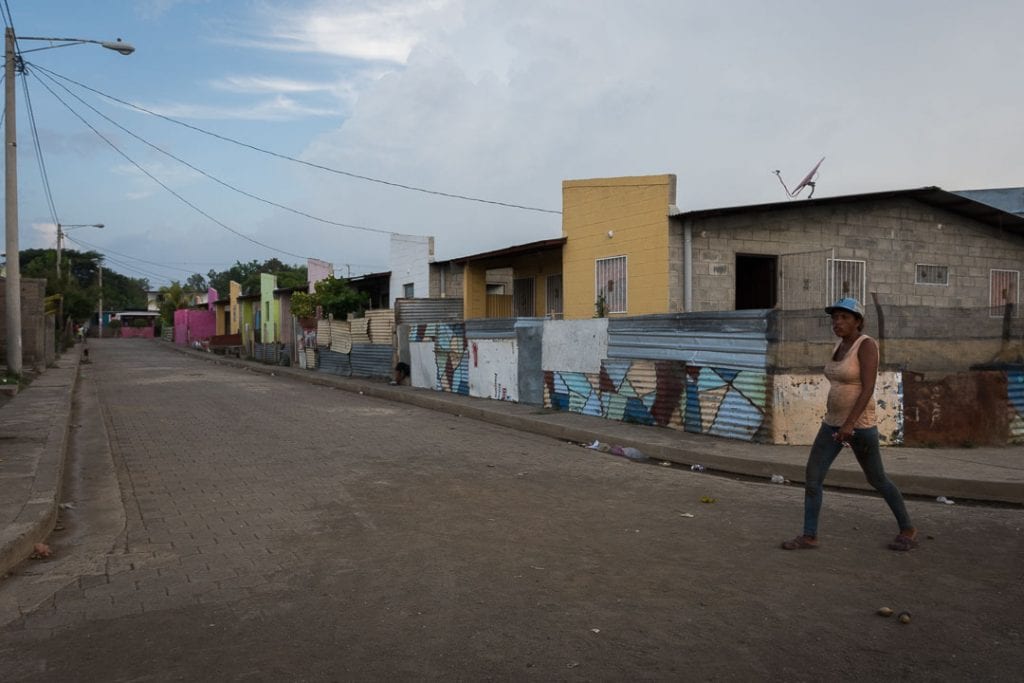
En Villa Guadalupe
Meanwhile, in Villa Guadalupe’s streets, you no longer breathe in the same pollution you used to. Homes aren’t made of cardboard and when winter comes around, there’s no danger of homes being flooded.
Sandra finishes cleaning up the plastic and manages to weigh the material with her husband. They predict that they will earn 500 Cordoba’s (nearly US $17) with what they are going to sell to the collector.
She sits in her hammock and says that even though she earns very little, she wouldn’t change what she has now for what she suffered in the past.
Freddy bids us farewell, but before leaving, he remembers that there is just one thing he will never throw out. It’s the tool he used to dig through the garbage. “I feel like this is a relic,” he says with a bit of nostalgia.






Comments are closed.